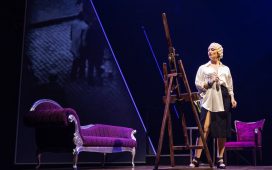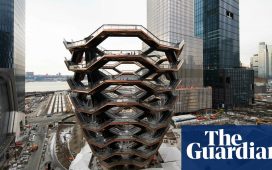The National Gallery in London reopens to the public on Wednesday 8 July. Although access to the main galleries remains free, it is only possible via timed entry, using online-only booking. You can’t just find yourself in the neighbourhood and wander in. Visitors will also have to follow one of three designated routes through the galleries, all of which are signposted, with arrows on the floor pointing up the prescribed flow. Quite how this will work, and how much one can deviate or jump between Route A, which begins in the Sainsbury Wing, and routes B and C in the main galleries, both of which terminate in the Impressionist Galleries, defeated me on my press preview visit on Saturday. I get the feeling the few dozen of us wandering the galleries were guinea pigs for a system that needs to evolve in practice. “There will be two-metre social distancing measures throughout the galleries”, I read, and the gallery recommends, but does not stipulate, that face coverings be worn.
I’m not much good at keeping to prescribed routes, always wanting to double back, take a second look or a random turn and even lose myself, so as to alight on something unexpected. Besides, in any public gallery with a good collection, it has for years been near impossible to linger with the best-known works. Try to stand your ground in front of Rembrandt’s Night Watch in Amsterdam’s Rijksmuseum, or Velázquez’s Las Meninas in the Prado in Madrid, and you might get trampled to the ground. Try holding your place against the tide of visitors in the Hermitage when the cruise ships have discharged their human cargo into St Petersburg. In a big show of Vermeer in the Hague some years ago, visitors jostled one another for position and fistfights almost broke out in front of these quiet, small, intimate paintings. The atmosphere was tense. It was hard to look, let alone think.

More people want to spend an extended time with a single work, or in a room of related works, than you might imagine. Paradoxically, this may prove easier than usual now, given that visitor numbers are being limited, and you have to plan ahead a bit. In any case, going anywhere is a far less casual affair than before. The fantasy that one might wander, flâneur-like, from room to room, nodding to acquaintances and flinging oneself on to a leather banquette with raffish disregard, to peer meaningfully at Fantin-Latour’s latest, or adopt a devil-may-care pose in front of a Courbet, has rarely been possible in most big-name museums for a long time. But now, we are in a different mindset. Yet, even with the severely limited numbers in the National Gallery on Saturday, I was still more aware of other people, and of their proximity, than I was of the art. Even in the wonderful, small exhibition of Titian’s late poesies, some visitors were so rapt they’d lost their sense of personal space. I am pretty sure, too, that a face mask alters one’s sense of proprioception, our unconscious sense of our own body’s position in space.
Call me a wuss if you like. In the National Gallery, I thought of the supermarket, where I am now so aware of other people careening randomly about the place with their trollies, that I always leave without some vital item on my shopping list. And just like the supermarket, you won’t easily be able to go back for something you meant to get, but missed. I nearly forgot to look at that Rembrandt’s late self-portrait (how knowledgable, how weary with the world he looks; he’s seen it all, I thought. Then: Christ, he’s younger than me!). I also found myself looking at things differently. It is OK for Cézanne’s Bathers to be so crowded together because they are obviously a related single household. Seurat’s lounging figures on the banks of the Seine at Asnières only appear too close to one another because the view is foreshortened. I worried about Joaquín Sorolla’s 1910 Basque drunkard in a bar (a new acquisition), two mates leaning over the table, chivvying another glass toward him, in the hope of getting the old geezer to burst into song or start a cider-fuelled brawl. I backed away.

On a bench nearby a woman visitor sat with her young daughter. When I asked her why, she told me that she didn’t feel obliged to wear a mask. This is unfair to other visitors and to the gallery staff and invigilators who must spend their days in full PPE rig, and whose responsibilities are even more onerous than before. I thought several people in the paintings themselves were wearing protective facewear, but apart from the sinister masks worn in one of Pietro Longhi’s Venetian scenes, they only had beards. What drew me in, unaccountably, were paintings without all those troublesome people in them. I want tumbling waterfalls, meadows, tumbled and deserted ruins, empty beaches, rocky coastlines, long horizons, light and space, a sky with birds wheeling. Routes B and C will lead you to these small, many of them minor paintings, in Room 46. Get up close to them and everything else will disappear.








